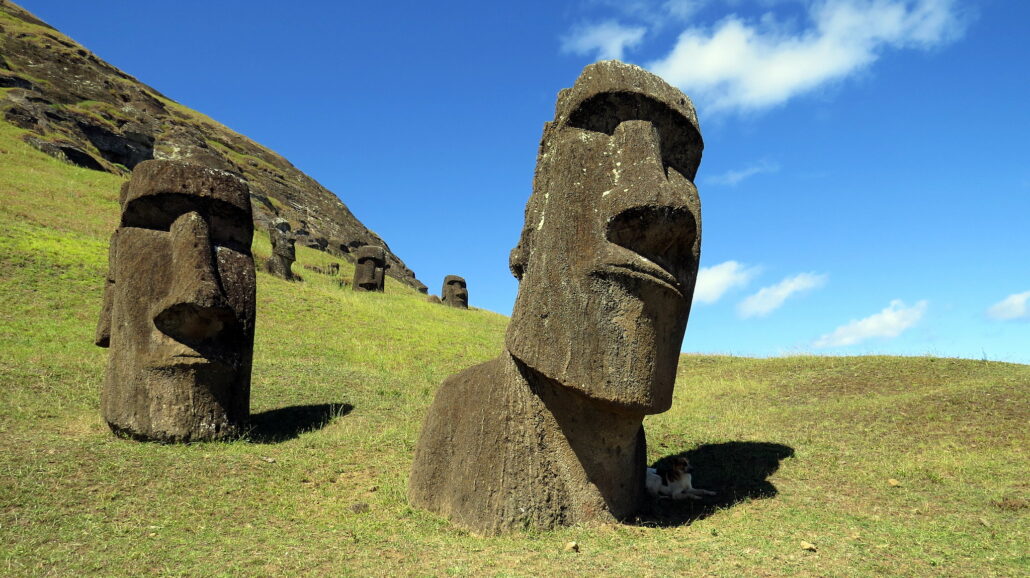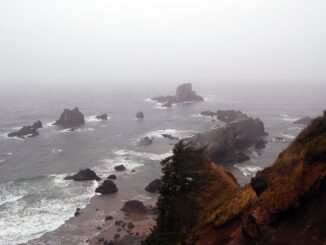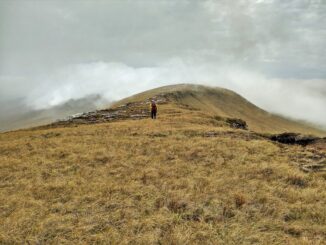
There is little evidence that the original inhabitants of Easter Island destroyed their civilization in a self-inflicted ecological collapse, scientists now say.
Rather, a new genetic investigation into the island’s history suggests that the native population of the island steadily grew in number until 1860.
Prior to this new discovery, the reigning theory held that the island suffered a population collapse after its inhabitants exhausted its natural resources. Many call this the ecocide theory.
What’s more, the research team publishing in the journal Nature said they’ve uncovered genomic evidence that the Polynesians of Rapa Nui reached South America years before Europeans did.
Contact between Rapa Nui’s Polynesian inhabitants and South American natives likely occurred sometime between 1250 and 1430. Europeans first arrived on the South American continent in 1498.
“We reject a scenario involving a severe population bottleneck during the 1600s, as proposed by the ecocide theory,” the study’s authors said.
The island known to most Westerners as Easter Island is called Isla de Pascua in Spanish. The native inhabitants call it Rapa Nui.
Now a territory of Chile, Rapa Nui is the most remote Polynesian island in the South Pacific. It’s located over 3,500 kilometers (over 2,000 miles) from the South American coast and wasn’t found by Europeans until 1722.
The island is most famous for the more than 1,000 giant statues found there, known as moai. The statues were built by the first Polynesians who began settling on the island in the year 1200 at the latest.
The moai are the defining feature of Rapa Nui National Park, a designated World Heritage Site by the United Nations Educational, Scientific, and Cultural Organization (UNESCO).
For decades, archaeologists and other researchers argued that the original population of Rapa Nui suffered some kind of ecological catastrophe, possibly related to the production of the giant moai statues. This theory is retold in the book Collapse by Jared Diamond.
The authors say their genomic research into the ancestry of Rapa Nui finds no evidence of a dramatic population collapse occurring before 1860.
They researched the genetic material from the remains of 15 individual native inhabitants. The remains are described as “ancient” by the research team.
The genomic evidence shows that Easter Islanders are most closely related to the inhabitants of the Cook Islands found thousands of miles west of Rapa Nui. This confirms oral traditions that say the first people to arrive on Rapa Nui came on canoes from islands now part of the Cook Islands group.
The giant moai were subsequently built, though the reasons for their construction aren’t entirely known.
Theorists have long held that the tremendous resources required to sustain the population and to build the moai ultimately resulted in the collapse of the Rapa Nui civilization responsible for the moai phenomenon around 1600. Parallels are frequently drawn to the Maya civilization of Mesoamerica, which also collapsed before steady European contact began.
But Moreno-Mayar et al. say the evidence they’ve uncovered from the genetic history of Rapa Nui’s people tells a very different story.
There was no steep population collapse around 1600. The authors say Rapa Nui’s population only began to contract sharply after ships from Peru kidnapped more than a third of the indigenous population for the slave trade. Thousands more died from European diseases.
The ecocide theory holds that Rapa Nui was home to at least 15,000 Polynesian natives at the height of the moai-building period. From 1722, the first Europeans to arrive on the island put the native population at around 1,500 to 3,000.
The ecocide theory is now debunked, this new study says. Its authors insist that there is no evidence that deforestation and resource overexploitation resulted in the deaths of almost 90% of the Rapa Nui’s population.
“These results do not suggest a population collapse in the 1600s, as argued for in the ecocide theory,” the authors conclude. “The effective population size monotonously increased after the initial peopling of the island but remained low during the past 1,000 years.”
Thus, the purported ecological and civilizational collapse of Easter Island frequently retold as a “cautionary tale” is a myth, they concluded.
They also found strong evidence of a genetic mixing of people from Rapa Nui and the South American mainland, though it’s impossible to infer anything beyond that, the authors cautioned.
“Polynesian peoples held the technology and know-how to embark on round trips to the Americas before Europeans reached South America,” the authors said. “Thus, we anticipate that additional pre-European ancient genomic data from other Polynesian islands will allow a more nuanced reconstruction of this process.”
©2025 Public Parks



